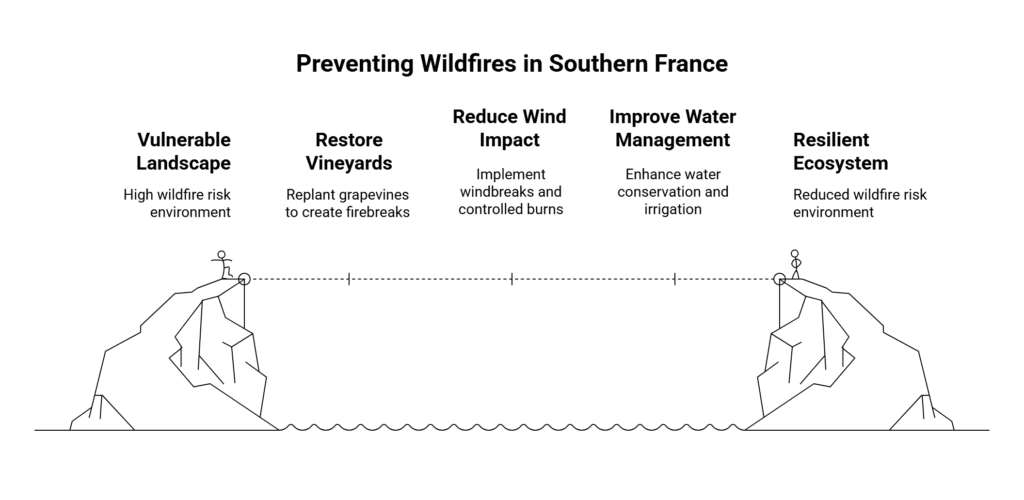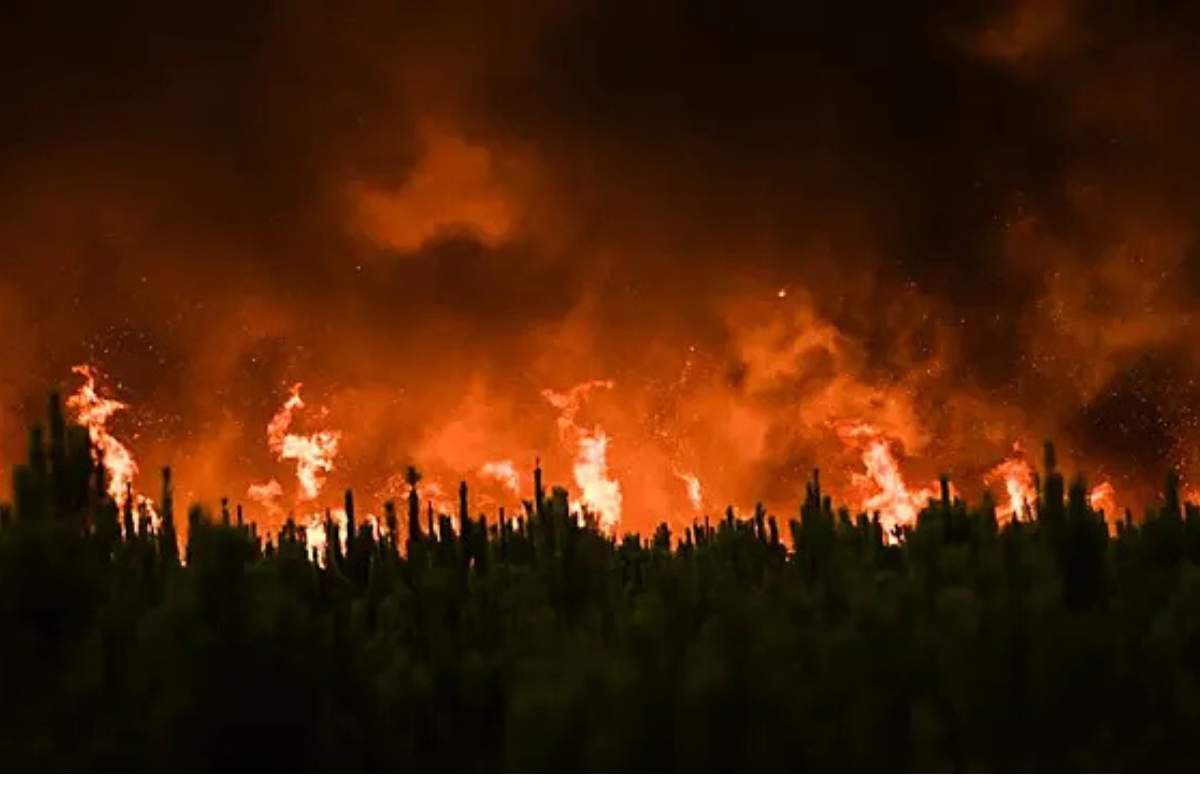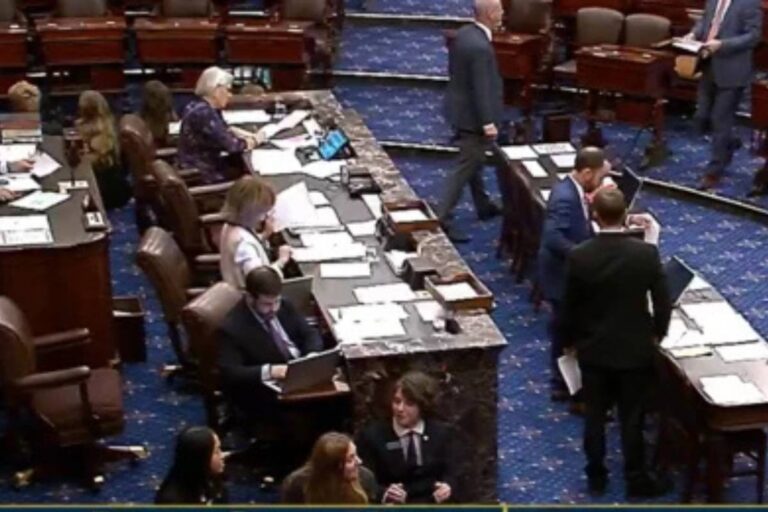Early afternoon on August 5, 2025. Heat hangs thick in the air. Suddenly, flames. A wildfire erupts near the Corbières mountain range in the Aude department, southern France. That’s not unusual for this region. But this one? Different. Relentless wind, bone-dry terrain, a perfect recipe for disaster.
Within hours, it’s a raging inferno. Officials, frantic and resolute, declare a state of emergency as the fire swallows more than 11,000 hectares of landscape. Imagine the city of Paris, blanketed in char and smoke, because that’s the size we’re talking about here.
Lives Lost, Dozens Injured, Thousands Displaced
Shockingly fast, the toll mounts:
- One elderly woman, unable to escape her home in time, loses her life
- Nine injured, including two civilians (one in critical condition with severe burns) and seven firefighters, two of whom are hospitalized
- At least one person is still unaccounted for
- Thousands evacuate, campgrounds at Lagrasse and Fabrezan, villages like Tournissan, emptied under emergency orders
The mood is heavy. There’s grief, relief, terror, and a sort of numb disbelief, churned together by the chaos of evacuation. Some people, clutching their pets and keepsakes, have barely seconds to grab what matters most before running.
“I wasn’t able to collect my belongings. When I left, the flames were just outside my home,” one resident recounts, voice trembling with exhaustion.
Response: An All-Out Battle in the South
No one expected it to move so fast. Firefighters, 1,500 of them, from all corners of France, descend on Aude. Crews attack the flames ground-level and from the air: nine Canadair water bombers, five Dash aircraft, and two helicopters pound the fire’s advancing edge. They lay everything on the line, fighting heat, fatigue, and shifting winds.
Still, it’s not just the flames that worry them. There’s the smoke, thick, rolling plumes that cut visibility to almost nothing, making every rescue and containment attempt a gamble. Main roads, including the A9 motorway, the link between France and Spain, are closed in both directions. Gridlock, confusion, dust choking the air.
President Emmanuel Macron takes to X, France’s equivalent of the public square, promising full national mobilization: “All of the Nation’s resources are mobilized,” he declares, urging extraordinary caution from residents in the path of the wildfire.
Evacuations and Destruction: People Flee, Homes Lost
The authorities’ order:
- Immediate evacuations of several villages (including Tournissan), as well as local campgrounds home to tourists and families
- Closure of several key highways and roads
- Deployment of hundreds of additional firefighters, water-bombers, and rescue teams
Here’s the scale:
- At least 25 homes were destroyed or damaged, and families face the unbearable task of returning to ruins, picking through what’s left.
- Thousands forced to leave: some touring the region on holiday, others longtime residents, all swept up by the same unstoppable threat.
Among evacuees, there’s fear. Anger, too. Why us? Why here? Officials work to provide temporary shelter, community centers, municipal buildings, and neighboring towns.
What’s Fueling France’s Worst Wildfire of 2025?

Blame it on the perfect storm:
- Abnormally low rainfall over recent months, vegetation is cracked and brittle, as dry as kindling.
- Persistent, intense winds gusting through valleys, lifting sparks miles ahead of the fire front.
- Vanishing vineyards, the removal of old grapevines, which in the past helped break fire progression, has left wide-open spaces vulnerable to rapid burn.
- Rising temperatures, southern France is no stranger to heatwaves, but climate data shows it’s getting worse. Europe is, in fact, the fastest-warming continent on the planet, with heatwaves and droughts growing more common as climate change intensifies.
These factors, layered together, turn every typical summer blaze into a major emergency. And southern France, with its rolling hills and Mediterranean climate, is right on the front line.
The Human Face of Disaster
Walk through a village like Fabrezan and you’ll see it: faces streaked with ash, eyes red from both smoke and tears. Volunteers ferry water and food to those sheltering in public halls. Children clutch stuffed animals, not quite sure why their world has upended in a day.
“I find it tragic to see so many fires since the beginning of the summer,” says one local woman. “It’s terrible for the wildlife, the flora, and for the people who are losing everything”.
Firefighting Challenges and Weather Hazards
Through the night and into Wednesday, the fire pushes forward, only somewhat slowed by patches of high humidity. But the fight is far from over. Lucie Roesch, secretary general of the Aude prefecture, spells it out: “This fire will keep us busy for several days. It’s a long-term operation”.
Key challenges:
- Unpredictable winds
- Flammable terrain, with very little natural resistance thanks to drought and deforestation
- Nighttime limits on aerial firefighting
- Worries of flare-ups and ‘spot fires’ jumping containment lines
Context: A Growing Wildfire Crisis Across Europe
Southern France’s battle is just part of a much bigger pattern. Hot, dry summers across Europe have meant more intense, more frequent wildfires, not just in France, but also in neighboring Spain, Portugal, and Italy. Some regions in Spain evacuated thousands the same week France’s Aude fire exploded into international headlines.
- France itself has faced more than 9,000 fires this year, mostly clustered in the Mediterranean region.
- In 2024, wildfires burned record amounts of land in both Portugal and Italy.
- Scientists warn: a warming climate is reshaping fire seasons, pushing Europe into new, uncharted territory.
Immediate Impacts: Nature, People, and Infrastructure
The devastation is immense and multi-faceted:
- Thousands of hectares of vineyards, forests, and farmland were destroyed
- Wildlife decimated, local ecosystems, already fragile, take another major hit
- Infrastructure crippled: highways closed, rural roads severed, power lines destroyed
- Air quality: choked by smoke and ash, miles beyond the fire zone, as particles drift on the wind
Communities brace not only for more fire, but for the aftermath: flooding and landslides often follow when trees and undergrowth are lost.
The Race to Recovery: Relief, Support, Next Steps
As the flames continue to burn, relief operations intensify:
- Emergency shelters expand to accommodate waves of evacuees
- Social services provide meals, bedding, and mental health support
- Local hospitals treat burn victims and those suffering from smoke inhalation
- Restoration crews assess the damage, begin clearing debris, and start the process of rebuilding homes and roads
Local and regional officials appeal for long-term government support to restore what’s lost, and reduce the risk of future infernos.
Climate Change, Land Use, and Community Resilience
Analysts point to wider implications:
- Urban and agricultural planning in fire-prone areas, creating breaks and barriers to slow fires, maintaining vineyards, and preventing mass abandonment of rural land
- Emergency readiness, investing in early warning systems, and rapid-deployment tactics
- Climate adaptation, planning for hotter, drier summers, and helping both city dwellers and rural populations cope with the “new normal”
“All the Nation’s Resources”, Mobilizing for the Ongoing Battle
As France continues to grapple with this historical fire, the nation’s resolve is clear. Leaders pledge all available resources, human, financial, and technological, to support both those fighting the flames and those rebuilding in the ashes.
And on the ground, among heroes without capes, the mood is summed up by one volunteer:
“We’ve always lived with fire, but not like this. This is different. We will rebuild. But first, we survive.”






















